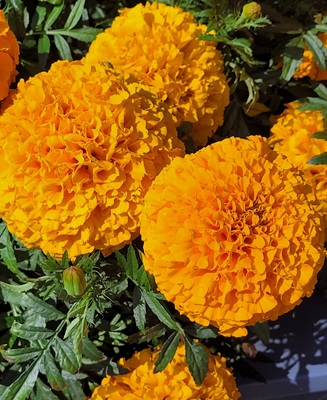Flower Properties
| Property | Value |
|---|---|
| English Name | Marigold African |
| MainColor | Orange |
| PlantType | |
| Growth Type | |
| Season | August |
| ImageUrl | Tagetes-001 |
| Photographer | DP |
| Location | Tatton |
| Human Toxicity | Non_Toxic |
Flower Details
Description
Tagetes erecta, commonly known as African Marigold, features large, vibrant yellow to orange flowers that bloom in dense clusters. The plant can grow up to 90 cm tall and has a bushy appearance with feathery, dark green leaves.
Distribution
This species is native to Mexico and Central America but has been widely cultivated and naturalised in many tropical and subtropical regions worldwide. It thrives in well-drained soils and is often found in gardens and landscapes.
Medicinal/Other Uses

✅ Traditionally, African Marigold has been used in herbal medicine for its anti-inflammatory and antiseptic properties. It is also commonly used in ornamental gardening for its bright colours and ability to attract pollinators.
Edibility

The flowers and leaves of Tagetes erecta are edible and can be used in salads or as a garnish. They are known for their slightly tangy flavour and are sometimes used to colour food.
Human Toxicity
Human toxicity: African Marigold is generally safe for human consumption and use.
Pet Toxicity

Non Toxic to dogs and cats - ingestion of the plant is unlikely to cause harm, though it may cause mild gastrointestinal upset in some cases.
Active Compounds
The plant contains flavonoids, carotenoids, and essential oils, which contribute to its medicinal properties and distinctive colour.
